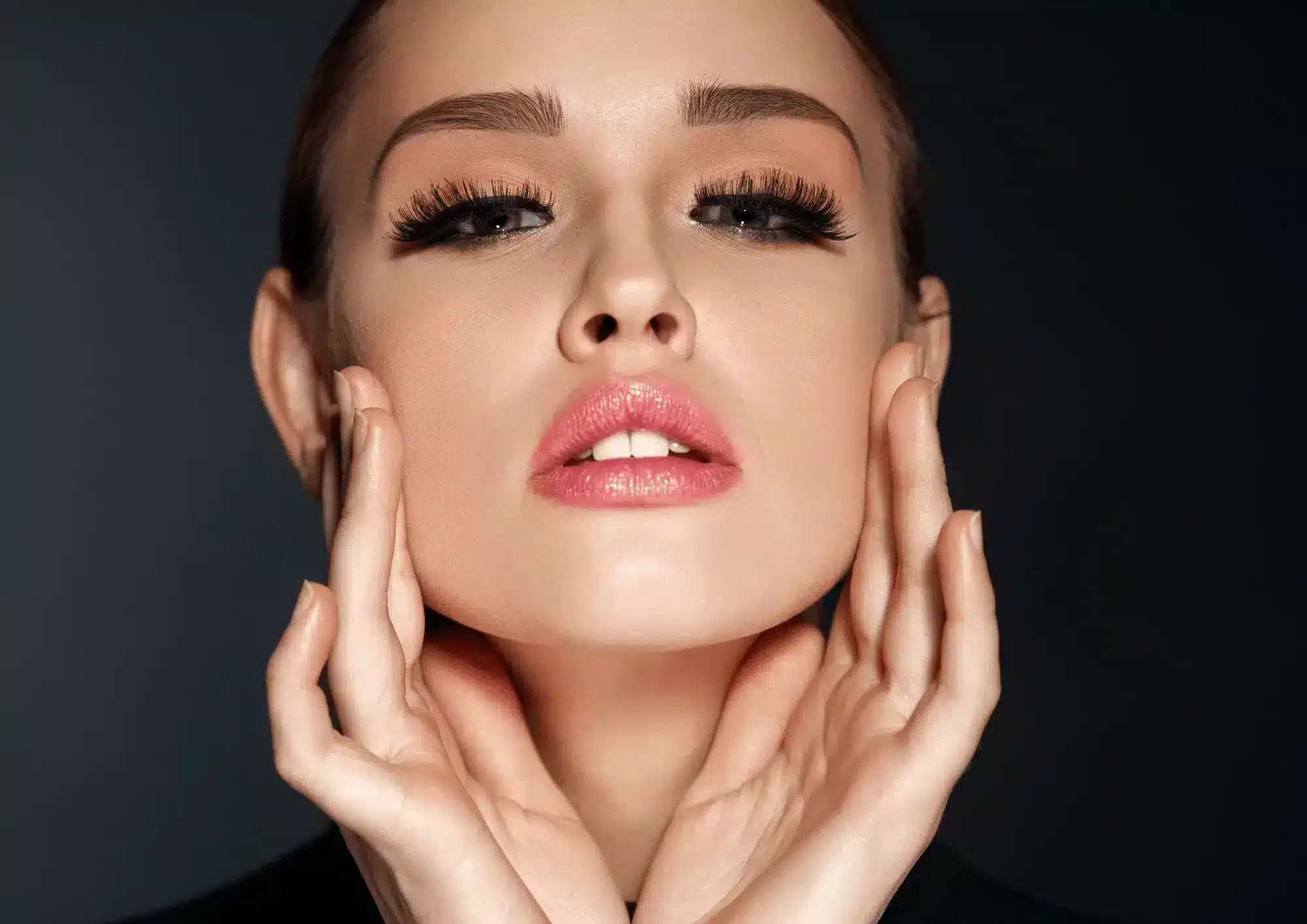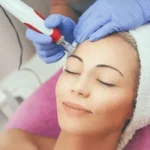Injectable aesthetics reviews. Dermal Fillers 101: Types, Popular Brands, Duration & More

What are soft-tissue fillers or dermal fillers?
Soft-tissue fillers, also known as wrinkle fillers, are gel-like substances made of natural or synthetic materials that are injected beneath the skin to reduce the appearance of lines, wrinkles, and folds, soften creases, restore lost volume, and enhance facial contours.
How do dermal fillers work?
As we get older, our faces naturally lose subcutaneous fat. Natural hydrators, such as hyaluronic acid (HA), and skin-plumping substances like collagen and elastin are also depleted. Our skin sags due to loss of facial volume. In addition, repeated movements and a lack of moisture combine to create wrinkles and furrows.
Dermal fillers are biocompatible. When injected into the dermis or subcutaneous tissue, the dermal filler readily integrates into the surrounding tissues. This increases the amount of HA in the skin, and skin hydration is immediately increased. By binding to a large amount of water molecules, the dermal filler is able to create temporary volume and fill depressions, such as scars, and areas suffering from fat loss.
What is the golden ratio? What does it have to do with symmetry?
The golden ratio is a geometric proportion that is believed to be aesthetically pleasing to the eye. Also known as the divine proportion, the golden ratio creates a rectangular shape with its length being approximately 1.5 times its width. The symmetry of the face is theoretically believed to affect how people perceive beauty, with more symmetrical faces being seen as more beautiful. The aesthetic industry has since adopted this mathematical ratio as a guide for balancing facial symmetry in facial rejuvenation.
How are dermal fillers injected?
Different dermal fillers and cosmetic products like Botox are injected at different dermal depths. Thicker and more viscous products must be injected deeper into the dermis. Utmost care must be taken when injecting into the thin-skinned areas of the face, such as the glabellar lines and vermilion border of the lips, because these areas are prone to vascular occlusion and necrosis. There are several injection techniques that a doctor can employ, taking into consideration the depth of injection required.
Common injection techniques for dermal fillers:
• Serial puncture
• Linear threading
• Cross-hatching
• Fanning
• Depot
• Cone
• Fern
What are dermal fillers made of?
Current naturally sourced and synthetic compounds used in clinical practice are as follows:
| Ingredients | Description | Products | Strengths | Weaknesses |
| Hyaluronic acid | Naturally occurring sugar molecule already found in the skin | Juvederm
Restylane BELOTERO® BALANCE |
-No skin testing required
-Versatile -Reversible -Immediate effect |
-Not efficient for large volume restoration |
| Calcium
hydroxyapatite |
Natural substance found primarily in the bones and teeth | Radiesse | -Suitable for structural lift
-Long-lasting -Immediate effect -Collagen stimulation |
-Superficial injection causes nodules
-Not suitable for the lips |
| Poly-L-lactic acid (PLLA) | Biocompatible and biodegradable synthetic polymer | Sculptra | -Long duration
-Good for large volume restoration |
-Requires mixing -Not suitable for lip injection -Delayed, inconsistent effect |
| Polymethylmethacrylate (PMMA) spheres + collagen | Biocompatible synthetic material with additional collagen | Artefill (Bellafill) | -Permanent | -Requires skin testing
-Not suitable for the lips -Side effects are permanent |
What are the side effects of dermal fillers?
The major concerns regarding dermal fillers are the occurrence of side effects and complications. Regardless of the product used, many adverse reactions can be attributed to the type of procedure, as well as the skills and experience of the doctor performing it. Fortunately, severe or delayed reactions are rare.
Possible adverse reactions to soft-tissue fillers are as follows:
| Immediate Reactions (more common but transient) | Subacute Reactions (rare) | Delayed Reactions (rare) |
| -Redness
-Swelling -Lump formation -Itching -Bruising |
-Abscess formation
-Discoloration -Persistent hypersensitivity reactions -Local necrosis |
-Nodule formation
-Granuloma formation -Ulceration |
What treatment techniques are available?
There are multiple approaches to injecting soft-tissue fillers. The technique used depends on the product being used and the area being treated. The doctor can choose among 3 types of correction based on the amount of material used:
• 1:1 correction
• Overfilling
• Underfilling
Underfilling is often used with injections from Sculptra, since multiple sessions are necessary for gradual buildup of the product. Slight overfilling may be necessary in the lip area, and 1:1 correction is commonly used in other areas.
What are the top dermal filler brands?
1. Juvederm: This is an FDA-approved filler that contains non-animal stabilized hyaluronic acid. It is injected into the mid-dermis and is made by the same company that produces Botox. Juvederm is used to correct mid-to-deep wrinkles and to contour facial irregularities.
2. Restylane: This is the leading dermal filler in the United States—over 10 million Restylane procedures have been done since 2004. It is used to treat lips, nasolabial folds, and hollow under-eyes.
3. Radiesse: This is a popular filler for the non-surgical “nose job.” Radiesse medication stimulates the production of new collagen, so the results last much longer than with other dermal fillers.
How much does treatment cost?
These widely used dermal fillers cost anywhere between $500 to $1,200 per injection. Overall cost depends on the area being treated and the desired result of the patient.
What happens before and after treatment?
Before the procedure, the patient will be counseled about the nature of the filler and the procedure, the expected outcome, the possible side effects, and any contraindications. Written informed consent and a complete medical history of the patient must be obtained prior to the procedure. Medications such as blood thinners, vitamin E, warfarin, and other anticoagulants must be avoided prior to injection.
Expect a small amount of redness or swelling for a day or 2 after the procedure. The patient can return to normal activities immediately after the procedure, but strenuous exercise and prolonged sun exposure should be avoided.
How long will the effects last?
Depending on the patient’s lifestyle, the area treated, and the injection technique used, dermal fillers typically last 3–6 months for temporary fillers, 9–12 months for semi-permanent fillers, and more than 2 years for permanent fillers.
What are permanent dermal fillers?
Bellafill (formerly Artefill) is an FDA-approved permanent dermal filler made of Polymethylmethacrylate (PMMA) microspheres. It is intended for correcting nasolabial folds, acne scars, and forehead furrows. Permanent fillers are recommended for patients who have tried temporary fillers in the past and desire longer-lasting results.
In a Nutshell
Choosing among the variety of dermal fillers on the market today can be overwhelming. It is important to learn about the differences and approved indications of each type of dermal filler. Careful product selection, proper injection technique, and a skilled doctor are all crucial to achieving a successful outcome. Many doctors use temporary fillers to achieve the desired results, as they are metabolized by the surrounding tissues over time. As well, there may be more options for specific cosmetic concerns with these fillers.
Injectable aesthetics reviews can be found on various platforms, including specialized aesthetic treatment review websites, social media platforms, and healthcare provider directories. They provide valuable insights for individuals considering these treatments, offering firsthand perspectives and experiences that can help inform decisions about undergoing injectable aesthetic procedures. Here are some key points typically covered in injectable aesthetics reviews:
-
Treatment Effectiveness: Reviewers often discuss how effective the injectable treatment was in achieving their desired aesthetic goals, such as reducing wrinkles, enhancing facial contours, or improving skin texture.
-
Safety and Comfort: Reviews may address the safety of the procedure, including any discomfort experienced during or after the injection process, as well as any side effects or complications encountered.
-
Provider Experience: Reviewers may comment on their experience with the healthcare provider administering the injectable treatment, including their professionalism, expertise, and ability to address concerns or questions.
-
Results Duration: Discussions often include the longevity of the results achieved with the injectable aesthetics, such as how long the effects lasted before additional treatments were needed.
-
Overall Satisfaction: Reviewers typically summarize their overall satisfaction with the injectable aesthetics treatment, considering factors like the improvement in their appearance, confidence level, and value for money.





